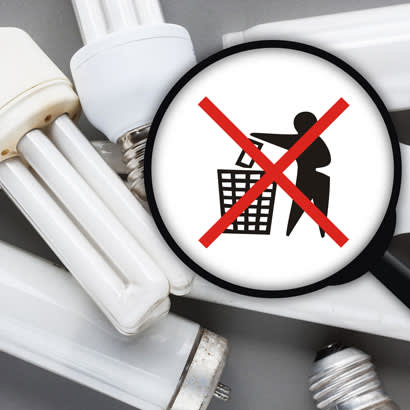
Park and recreation facilities provide a safe space for people to interact in a wide variety of activities. And with the arrival of the warmer summer months, more people are staying out later to take full advantage of recreational areas, such as tennis courts, playgrounds and running trails. During the summer, public spaces must be illuminated for longer hours to provide increased visibility and safety for patrons, and park and recreation facilities must manage their operating expenses responsibly while providing pleasant programs and opportunities to their communities.
Fluorescent lamps are the backbone of efficient lighting for many recreation complexes. Fluorescent lamps, HIDs and sodium lighting provide strong, consistent illumination for several applications. Used in outdoor lighting for basketball courts, sports fields and parking lots, the familiar lamps are an important part of operations. While park supervisors have started to make the move to higher efficiency, long-life LED lighting, most non-residential, high-output lamps still contain mercury. So, what is the proper way to dispose of these lamps when they have come to the end of their practical life?
Improper Disposal
For households, the EPA recommends boxing up fluorescent lamps and waiting for proper waste collection services to pick them up or dropping them off at a household hazardous waste facility. Park and recreation facilities use many more bulbs than the average home, and by federal law, non-residential fluorescent bulb users are required to follow specific guidelines to dispose of their spent lamps. However, recently, several state and national parks have been cited for improper handling of their spent fluorescent lamps. Whether tossing the bulbs in the solid municipal waste dumpster or burying the lamps on location, the improper disposal of used bulbs has become an environmental problem.
The mercury contained within the lamps is the issue. While perfectly safe when the lamp is in operation, mercury is a dangerous toxin if it comes into contact with people, animals, air and water. The amount of mercury contained in a small, household thermometer is enough to completely contaminate two Olympic-size swimming pools. A few broken fluorescent lamps on park grounds can contaminate the soil or natural water features, and ruin a facility’s reputation.
The public looks to its parks as the model of environmental stewardship. Many people actually learn much of their best environmental habits from park leadership, so it becomes all the more important to set the example and properly handle fluorescent waste, not to mention it is an integral part of remaining EPA compliant.
Proper Disposal
Single parks and facilities using a limited number of lamps might consider boxing and storing them until it is worthwhile to ship them off for recycling. There are services, like Lighting Resources, that sell specially lined boxes that protect the environment, should a lamp be accidentally broken. The agency simply stores the used lamps in the box, until it’s full and then return it, using prepaid postage.
For towns and communities, lamp recycling can be consolidated. Using a system like a BulbEater® drum-top crusher can make recycling efficient and easy. According to Jake Vest, trades manager at the Village of Northbrook, Illinois Park District, “We recycle all of the bulbs from our facility as well as the Village facilities. Residents can also drop bulbs off at the Village of Northbrook and we recycle those as well.”
Once a 55-gallon drum is filled with crushed bulbs, the user sets up a hazardous-waste pickup with a licensed handler, and in return, gets a certificate of recycling that fulfills EPA recordkeeping requirements. Bulbs are recycled at certified processing facilities where the mercury from the bulb, as well as the aluminum fixtures, glass tubing and other materials are reclaimed for reuse.
The city of Naperville, Illinois, has filled two drums of lamps (approximately 1,350 bulbs, each) since purchasing a BulbEater® two years ago and hopes to change out all its fluorescent lamps with LED replacements, as the older lamps burn out. Using the bulb crusher has given the city the ability to safely coordinate the retrofit and keep its storage space footprint well-managed.
When considering the disposal of large lamps, like high-pressure sodium lamps used to illuminate sports fields, PalletPak Recycling Kit programs offer a safe way to recycle bulkier fixtures and reflector lamps.
With environmentally sound practices on so many people’s mind, it is important for park systems to be aware of the safe, proper way to dispose of their lamps. Box and store, shipping or crushing bulbs are three options for disposing of used CFLs, linear bulbs and high-density lamps. Choosing to work with a reputable hazardous-waste handling partner, like TerraCycle® that can provide documented proof of responsible recycling will give your organization the peace of mind that comes with operating professionally.
For more information, check out EPA Government standards for disposing of bulbs that contain mercury.
Bobby Farris is General Manager for TerraCycle Regulated Waste.

